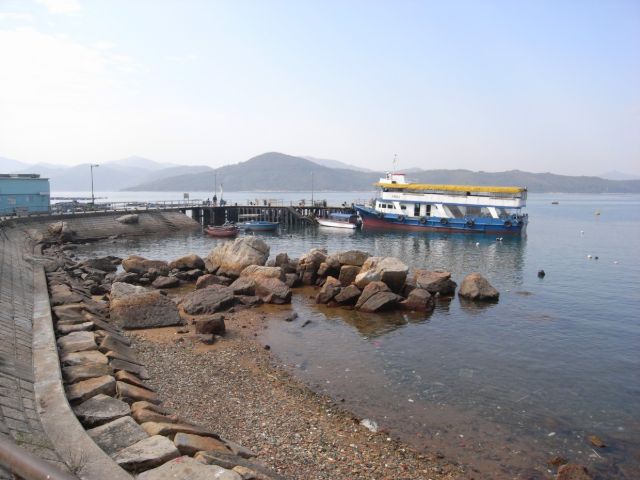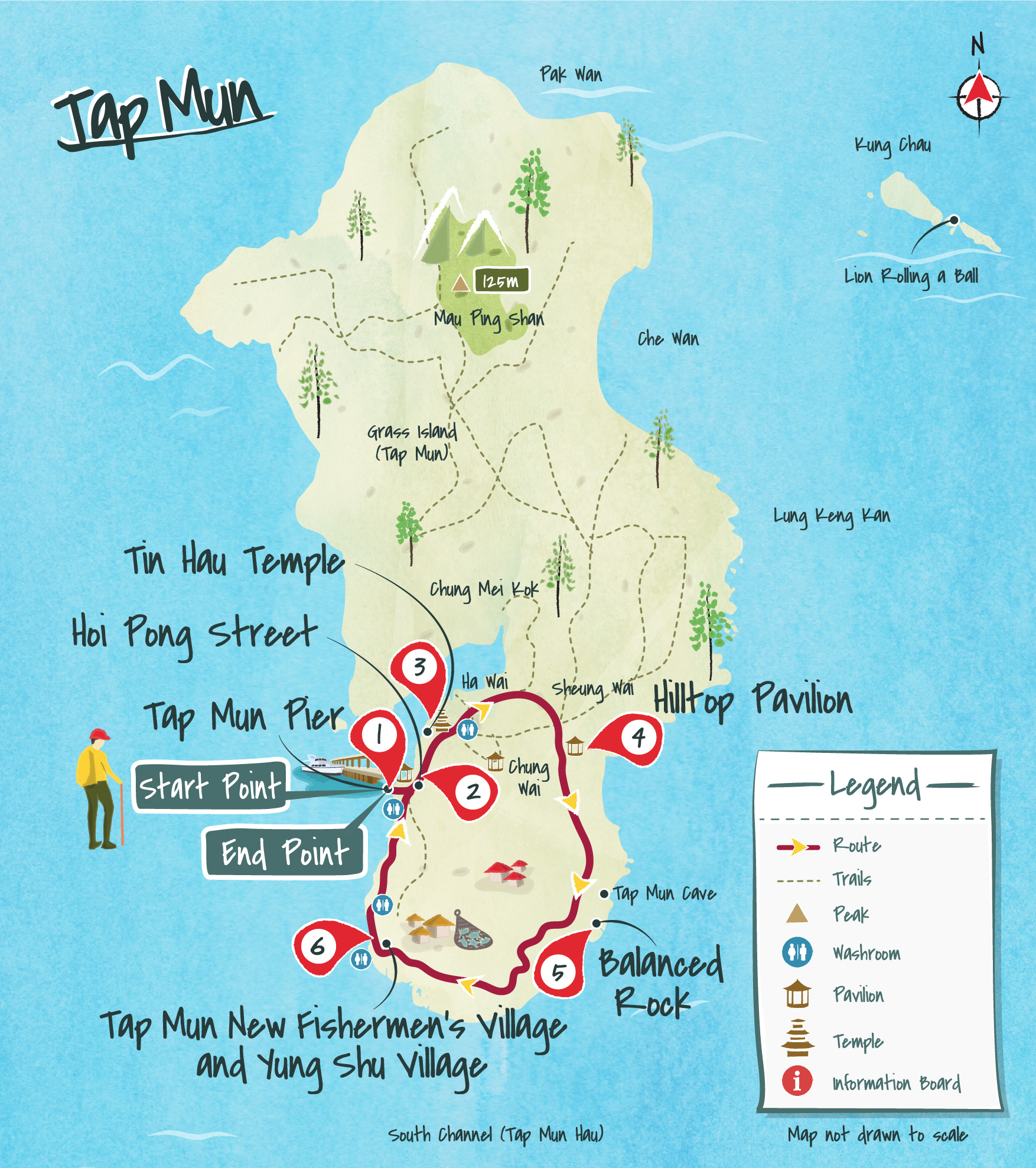
Sitting to the north of Sai Kung, this islet is very convenient to explore. With lush green meadows and crystal clear waters, its calming island atmosphere takes you away from the urban hustle and bustle to a pleasant day of kite flying and picnicking.
Average hiking time: About 1.5 hours | Distance: Approximately 2.5 km | Difficulty: Easy
Stop 1: Tap Mun Pier


Stop 2: Tap Mun Hoi Pong Street
A bygone era of fishing communities survives on the main street of the village, where you can feel the breeze in front of a calm sea with skiffs and fish rafts, savour the local tastes in a seafood restaurant, or buy some Tap Mun sea produce from the street stalls.

Stop 3: Tin Hau Temple
Turn left from the pier, pass through Hoi Pong Street, climb up a flight of stairs and be greeted by the Tin Hau Temple of Tap Mun and a broad sea view. The 400-year-old temple has an altar, and legend has it that it is connected by a hidden tunnel to Tap Mun Cave on the opposite shore of the island. You can try to listen for the sounds of the waves on the other side of the island! Also, be sure to take a detailed look at the century-old, exquisite ceramic sculptures on the temple’s roof.

Stop 4: Hilltop Pavilion
Follow the path to the left of the abandoned King Lam School until you reach an extensive meadow, and you will understand why Tap Mun is also called Grass Island. Have a picnic at this popular spot, where you will see feral cattle grazing, or take in the magnificent crystal-blue sea from the pavilion at the top.

Stop 5: Balanced Rock
Continue on the path and find two neatly stacked rectangular rocks of around six metres high in the shape of the Chinese character ‘呂’(lui). It is also said to resemble a stupa, and together with the nearby Tap Mun Cave that opens up to Mirs Bay like a door, the island was thus named ‘Fat Tap Mun’ (‘Stupa Door’), which was later simplified into Tap Mun.

Stop 6: Tap Mun New Fishermen's Village and Yung Shu Village
The circular walk finishes by passing through these two villages, where you can see a rustic way of life that seems worlds away from the fast pace of downtown Hong Kong.

Getting to Tap Mun (Grass Island):
- Take a taxi from MTR University Station, Exit B, to Ma Liu Shui Ferry Pier for a kaito. The journey takes around 1.5 hours; or,
- take bus 94 from Sai Kung to Wong Shek Pier for a kaito. The journey takes around 35 minutes.
Leaving from Tap Mun (Grass Island):
Board a kaito at Tap Mun Pier for Ma Liu Shui or Wong Shek Pier.
For the kaito service schedule, please refer to the Transport Department website.





 Live Chat
Live Chat









